After how homely Veliko Tarnovo had been, I was fairly reluctant to go to Sofia – but given that I was flying to Bangkok from there, I had little choice. Still, if I had to go I figured I might as well make the most of it, and begged Tom to come with me, finally convincing him with promises of food, The Raveonettes and sledding.
Long bus trips are always a nightmare for me if there isn’t a toilet on board. My bladder seems to have a fairly pitiful capacity and I spent most of the bus ride clenching my pelvic floor for all it was worth while Tom, the troll, kept making water sounds in an effort to make me lose control.
“You realise that even if I pee, you’ll still be sitting next to me, right?” I asked him. “It’ll be unpleasant for you too.” He shook his head cheerfully “Nup, it’ll be on you and your seat, not me. I’ll just find it hilarious.”
I was granted reprieve from Tom in the form of a young American Mormon who’d overheard us and, excited at the prospect of other English speakers, came over to chat. “I’m Elder Wyman,” he introduced himself. I found it amusing that someone who looked about 16 called themselves ‘Elder’, but he explained that it was what missionaries of the Jesus Christ Church of Latter Day Saints were called.
I’d never met a Mormon before – or a missionary – and I found the whole thing very fascinating. Most Mormons spend two years on mission, Elder Wyman told us, usually around the age of 18, and they were sent anywhere around the world. He himself was going to go to university when he got back to the US.
It didn’t sound easy at all; while they were on mission, they had to wear formal clothing at all times and even on this bus journey he was in suit pants and a collared shirt and tie. Nor were they allowed to maintain contact with those back home – except for a weekly church authorised email to their family, and two phone calls a year on Christmas and Mother’s Day.
For a missionary, Elder Wyman was surprisingly open minded. He didn’t proselytize at all, and instead spent most of our conversation asking questions about Tom’s and my travel experiences thus far, and talking about music – he was a big fan, as were both of us, of The XX. When we got to Sofia, he took a quick photo with us at the bus stop before I had to sprint for the bathroom.
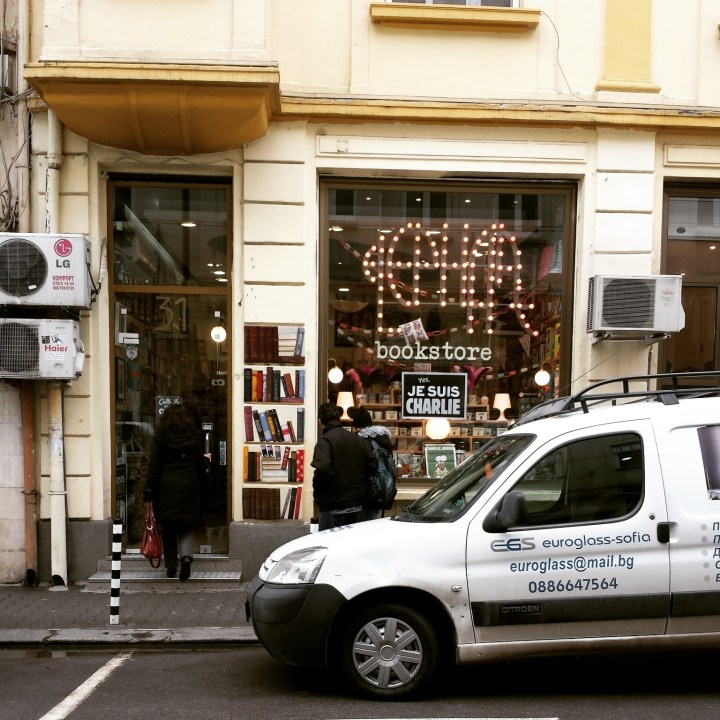
Bladder mercifully empty, we made our way to the hostel – another Hostel Mostel but, we were disappointed to find, bigger and not as cozy as the one in Veliko Tarnovo, and with all the food served up for dinner over saturated with salt. The staff were wonderful though, and when we said that we wanted to go out that night, the guy who takes their free pub crawl tried his best to find us some decent nightlife.
We had heard that you could go out any night in Sofia. This was, however, a compete lie. I’d also been told that Sofia had a thriving drum & bass scene and that I’d have no trouble finding some. Instead, one of the hostel staff told me that I’d just missed the biggest dnb party in a decade that Saturday and, as this was a Monday, the next night I could find any would be on Thursday night.
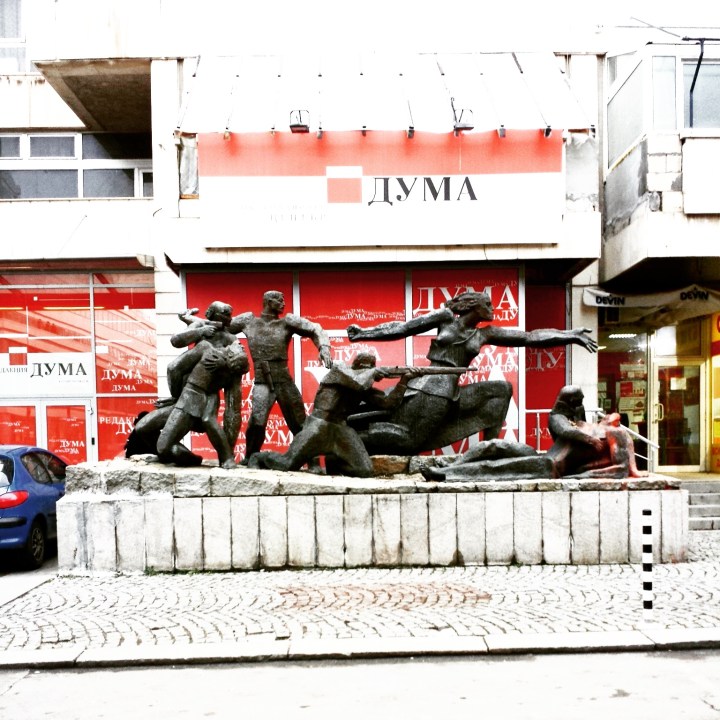
The disappointment of missing out on a huge drum & bass party was made even worse by the fact that Sofia is dead on Monday nights. We tried so hard to find something, but the most exciting point of that night was when Tom almost got into a fight with a drunk Irish man who held him responsible for the US’s foreign policy and his English friend then picked me up (without my permission) to try to do some kind of aerial manoeuvre and almost dropped me upside down onto the floor.
Our sledding plans also ended up falling through, because – despite hearing that fact the snow in Sofia had been wonderful the entire time we were in Veliko – it had gotten too warm just before we arrived and there was no longer enough snow on Vitosha. Go figure.
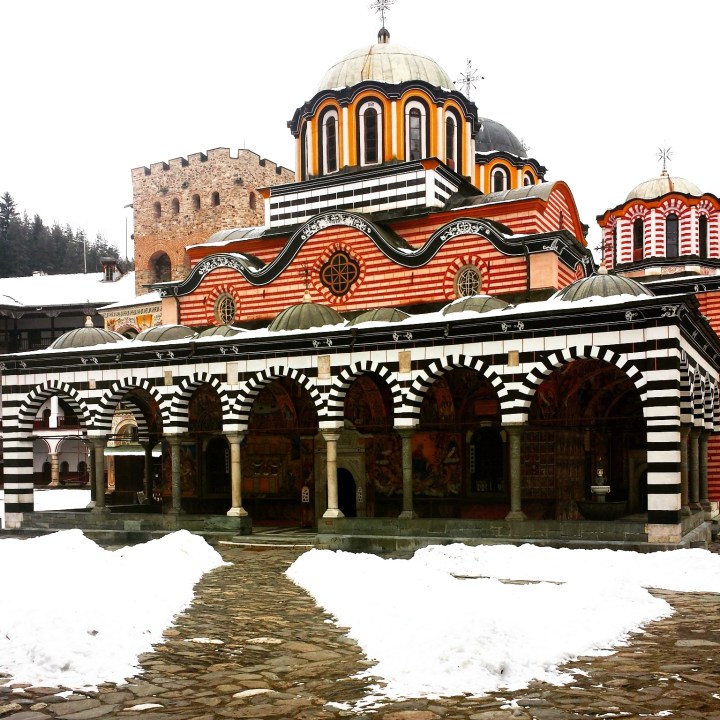
Instead, we decided to do a day trip to Rila Monastery, which the Spaniards in Veliko Tarnovo had said was worth seeing. After spending hours driving there and back, I had to disagree. Not that the Monastery was bad, it just really wasn’t with the 25E each that at we’d spent to get there.
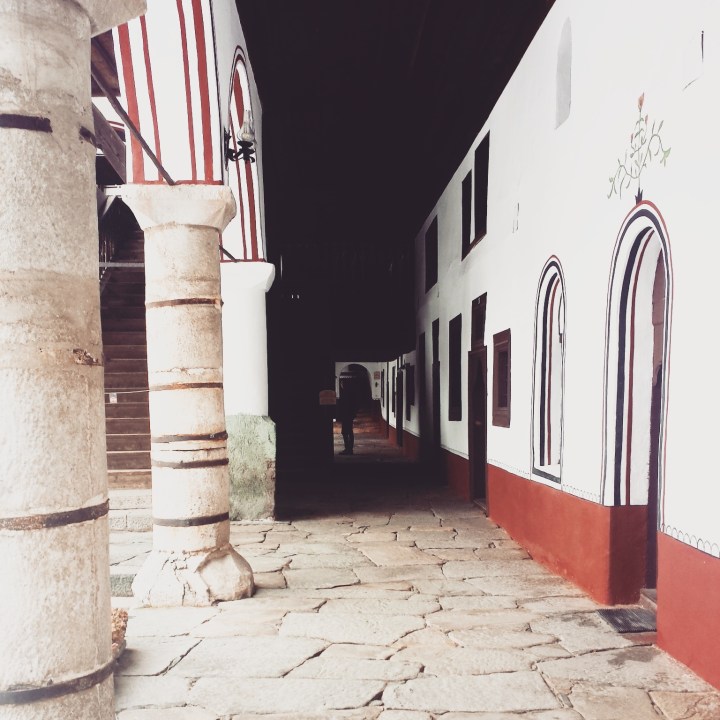
The church was very ornate and the monastery very tranquil, but we weren’t allowed to explore the inside at all, or to climb the stairs above the ground floor. So essentially, we walked around the grounds,spent a while inside the church, and then, with nothing else to see or do, decided to get lunch.
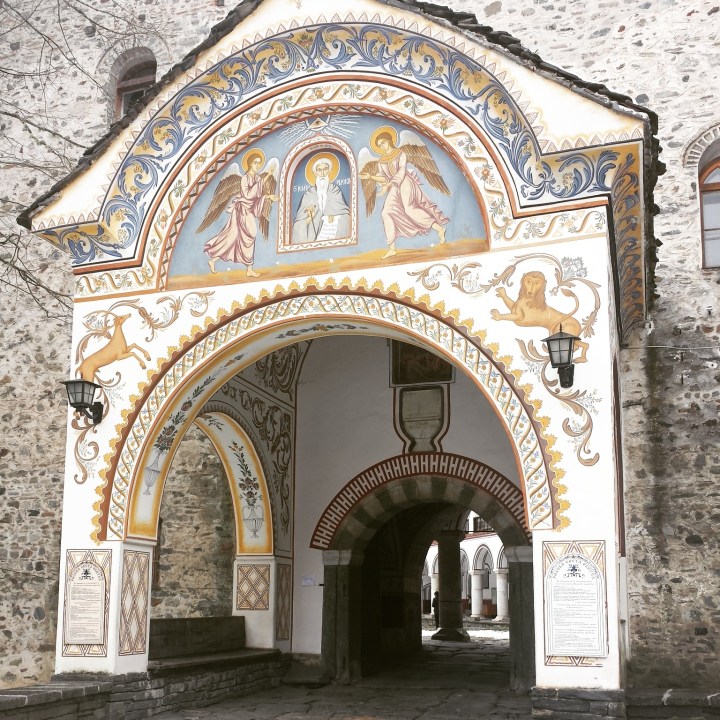
We should have known that lunch near a Monastery would be overpriced and underwhelming. And then to top off matters we started being followed by a pack of dogs with blood all over their chewed up coats, who were growling at us in a fairly offputting manner. Not worth the 25E at all.
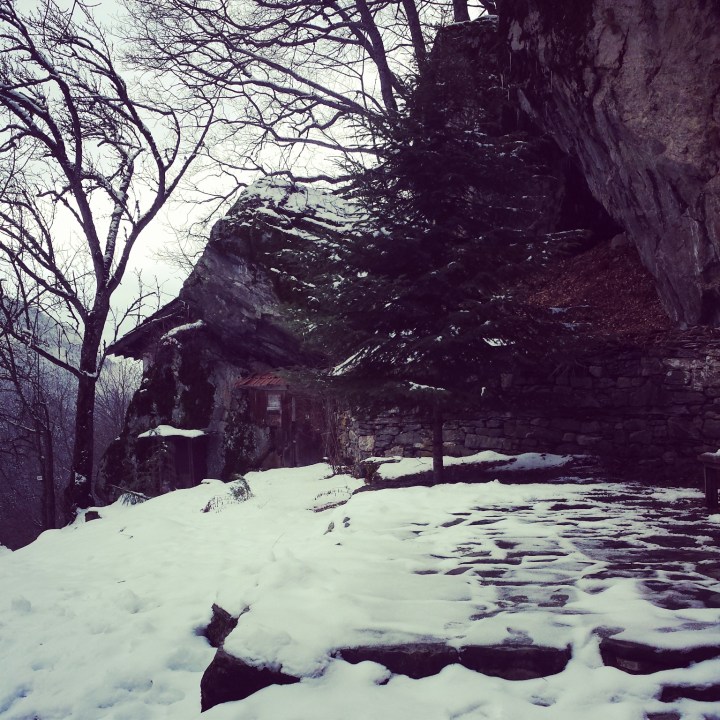
The good part was that there was a cave and a monk’s grave a few kilometers away, and our driver stopped us by the side of the road and took us for a lovely hike through the woods to see them. The cave is this narrow little thing that you have to slither through to get out from the other side and apparently a saint had lived there.
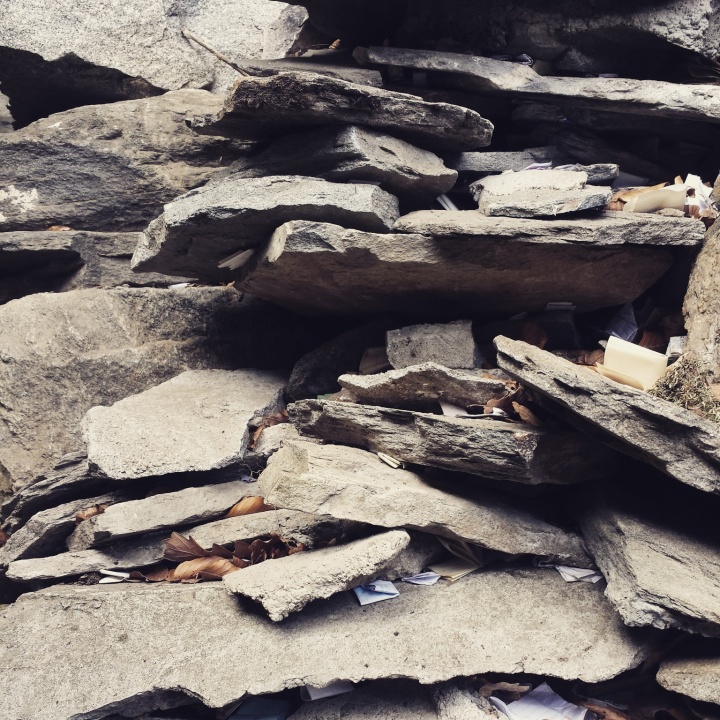
Outside, you’re meant to write a wish on a piece of paper and wedge it between the stones that make up the little memorial, and it’s supposed to come true. Our driver, an absolute sweetheart whose complicated sounded Bulgarian name I just couldn’t figure out, had bought pen and paper with him so we could add our wishes to the wall too, and then we had a ferocious snowball fight.
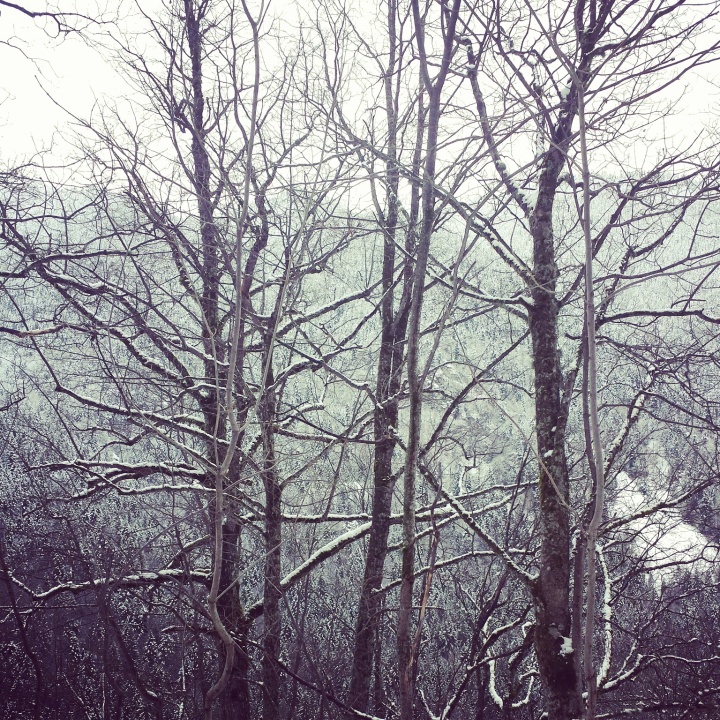
We went better on the food front. We’d heard about a free food tour – Balkan Bites – and, after questioning how such a thing could exist, went along and got to try little bites of different Bulgarian specialties:
- Tarator at Supastar: Supastar is a really hip little soup place; soup’s a bit of a fad in Bulgaria, a little like fresh juices in Sydney, and they do it very well. Tarator is a chilled soup made out of yoghurt, cucumbers, dill, garlic and walnut and it’s so refreshing.
- Organic breads and dips at Sun and Moon: Sun and Moon is this very cosy little place where they grow all their own ingredients and make their own bread. We had lyutenitsa, which is a smokey tomato and capsicum dip, and another dip made out of eggplants.
- Cheeses at Hadjidraganovite Izbi: Hadjidraganovite Izbi has traditional Bulgarian food and the decor to match, with even the staff in Bulgarian folk costume. We got to try different soft cheeses, variously flavoured, and a sweet white wine.
- Banitsa at some underpass: I’m not sure this place even had a name, I thought we were heading for a train station when we came upon it. It made amazing banitsa though, which is like a cross between a croissant and spanakopita, layers of soft, buttery filo pastry stuffed with cheese and other fillings.
I really enjoyed the food, and our guide also told us a lot about Bulgarian history and street art. It would have been amazing except that, even though it was just the three of us, he kept talking at us instead of with us – while we were out in the cold and wind.
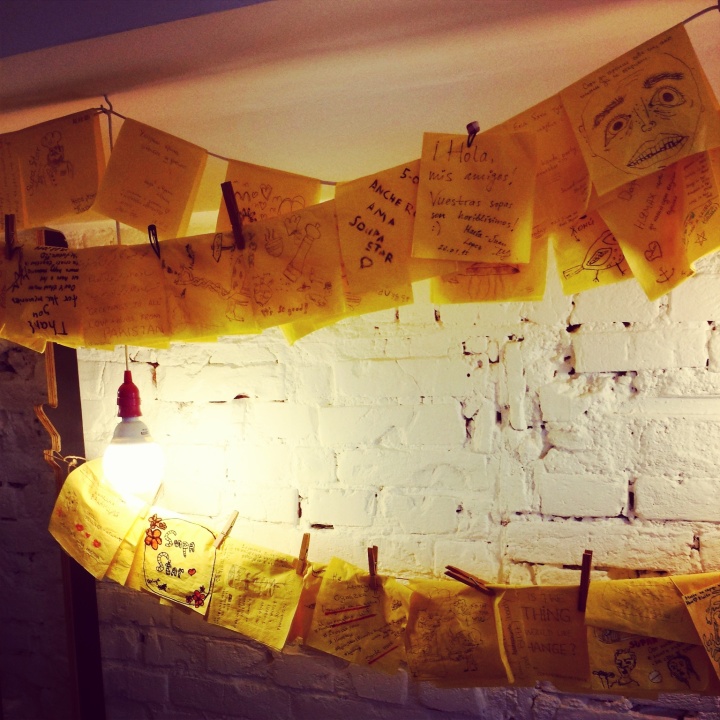
Which, really, just seemed a bit counterintuitive to me; if you’re going around warm, cozy restaurants and the people you’re with are visibily shivering when you stop outside, why not just give them the speeches inside? We’d definitely have bought hot drinks at each place if we’d had more time (we were getting rushed through), which you’d think they’d like.
I did learn some interesting things though – my favourite little tidbit being about Bulgarian klek shops. Back under communism, our guide told us, workers were just moved to wherever they were needed, and so you ended up with lots of people living in the basements of buildings. Then, when the communist regime collapsed, it was cheaper to sell things from these basements than it was to buy/hire store space.
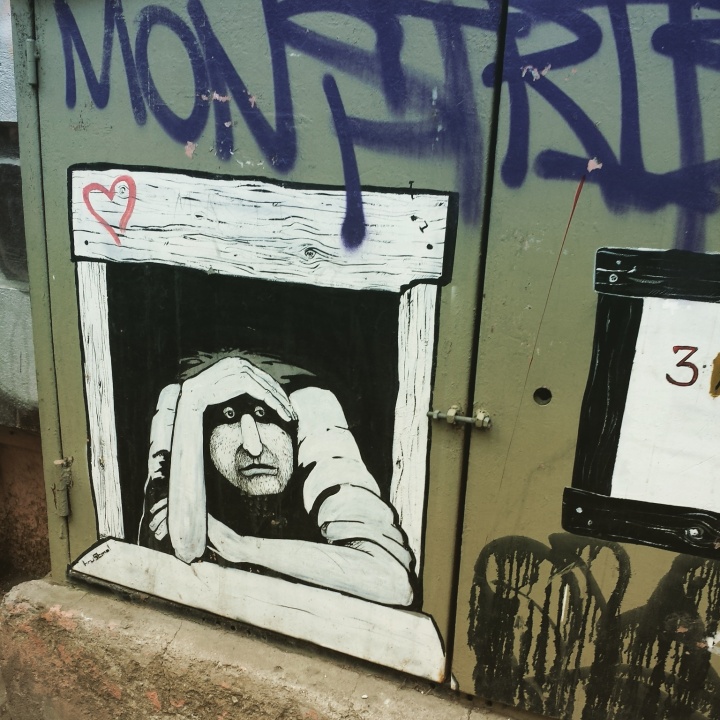
So you can find these all around Sofia, little basement windows with big cardboard placards around them on which are printed pictures of everything you can buy, and you just squat down to the window to make your purchases.
Back on the subject of food, though, we did manage to get through most of the list that the girls in Veliko had given us. We’d had lyutenitsa on the food tour (and had gone back for more later), and then, after having no luck at first, stumbled upon a traditional Bulgarian restaurant that had stuffed peppers.
It was a gorgeous place to eat them, by candlelight and with a live band playing. Incidentally, you’re not supposed to clap when musicians finish playing in Bulgaria (or at least, not at restaurants) because it means that you want them to come and put on a private little performance for you at your table, which you tip them for appropriately afterwards.
We also found an amazing place called Divaka, which is a chain restaurant and fairly cheap, but which looks like a really upmarket place! Divaka also had stuffed peppers – much cheaper than the first place – and I went back a few times to indulge.
We didn’t, however, have any luck with musaka (the Bulgarian version of moussaka, made with potatoes and minced pork meat). Try as we might, we could not find any place that made it. Apparently you really need to find a Bulgarian grandmother and get her to make it for you. Unfortunately we didn’t have any Bulgarian grandmothers handy, so we had to forsake it.
Bran, one of the guys working at Hostel Mostel did offer to make me some at his place, but he lives with housemates and when I asked if Tom and Elena could come too, he wasn’t sure if there’d be enough space. It’s okay though, I hold out hope of finding someone who can make musaka back in Australia and convincing them to invite me over for dinner.
The best part of Sofia, though, was the night we went to A:part:mental with Elena and then to Terminal One to see the Raveonettes.
Elena (not the Veliko one), was another girl I’d messaged over Couchsurfing. She was awesome – she liked having adventures and trying new things and outdoor activities and good food and dancing and yoga. Tom and I met her for dinner and of course we all hit it off.
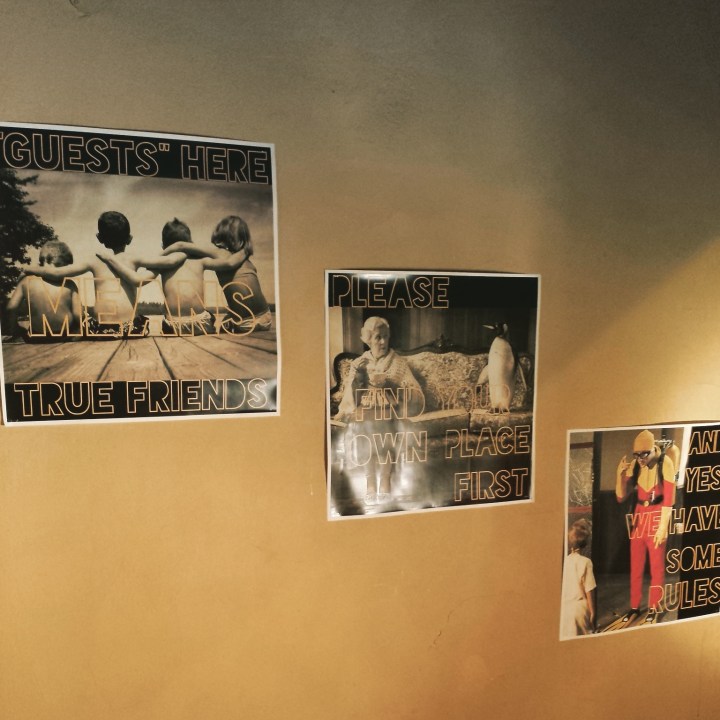
We had a lovely evening of stuffed peppers, laughter and vodka peaches, walking through the lit up streets of Sofia and finding ourselves at this gorgeous little bar called A:part:mental.
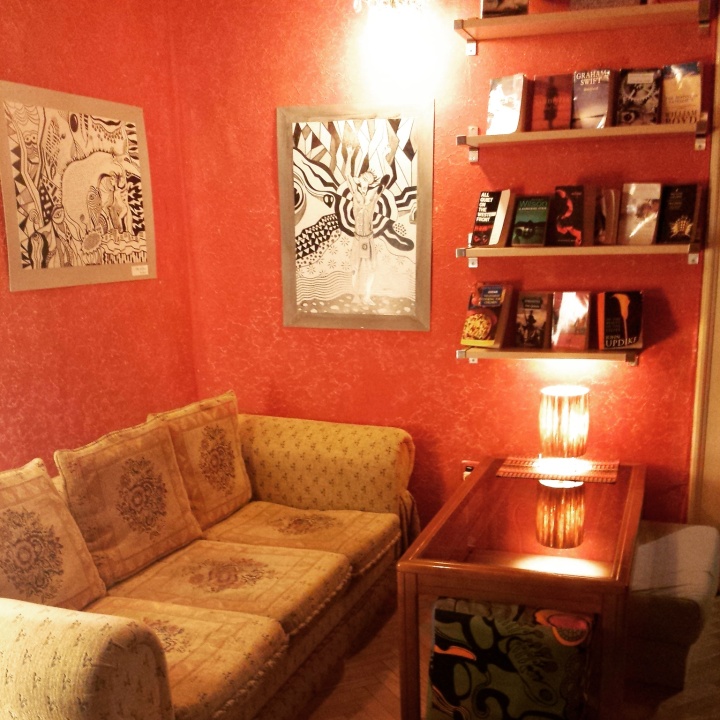
I fell instantly in love with it as soon as we got there. Each room was decorated differently but it was all so cozy, with quirky little signs on the wall. It was literally a bar in an apartment, with a kitchen where they cooked food and a very homely bathroom with a shower in it.
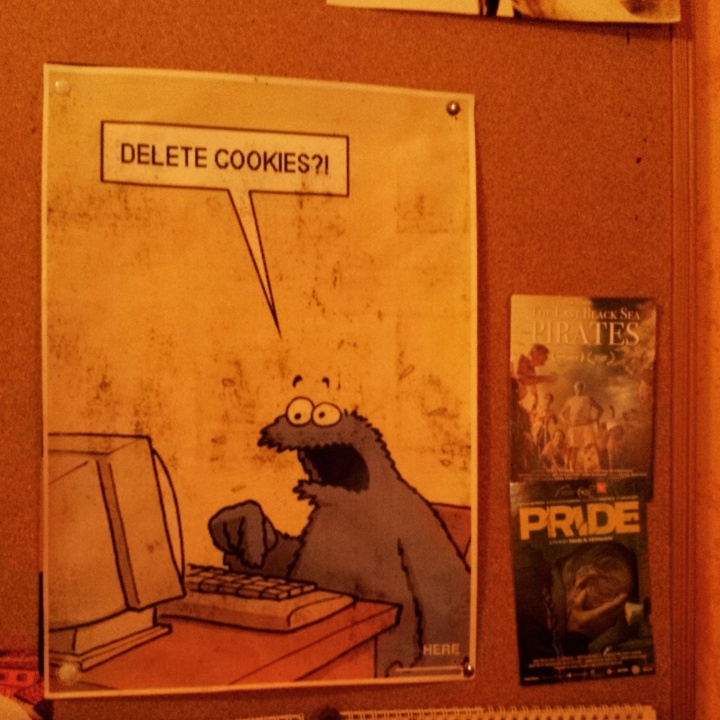
It was all dimly lit, some rooms looking like a Madame’s boudoir from decades ago, others looking like a salon, the kind of places you’d imagine Hemingway and Twain used to hang out in, and everywhere people would smile at you coyly.
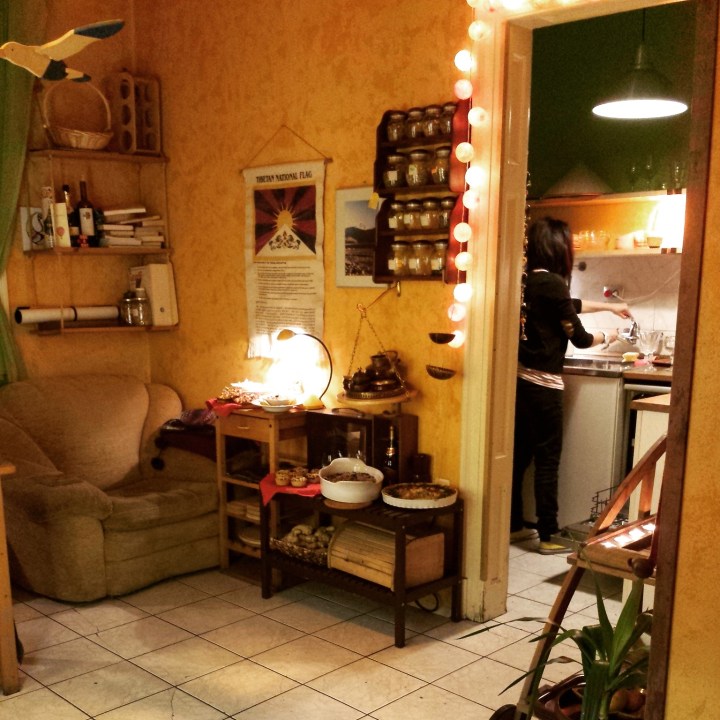
We meandered through wonderingly, finally finding a place and settling ourselves with goblets of home made raspberry wine. It was so easy to get caught up in the atmosphere and just lose ourselves in conversation. We ended up accidentally staying there till after the Raveonettes started – more my fault than anything really, as Tom did make some gentle attempts at getting us to hustle.
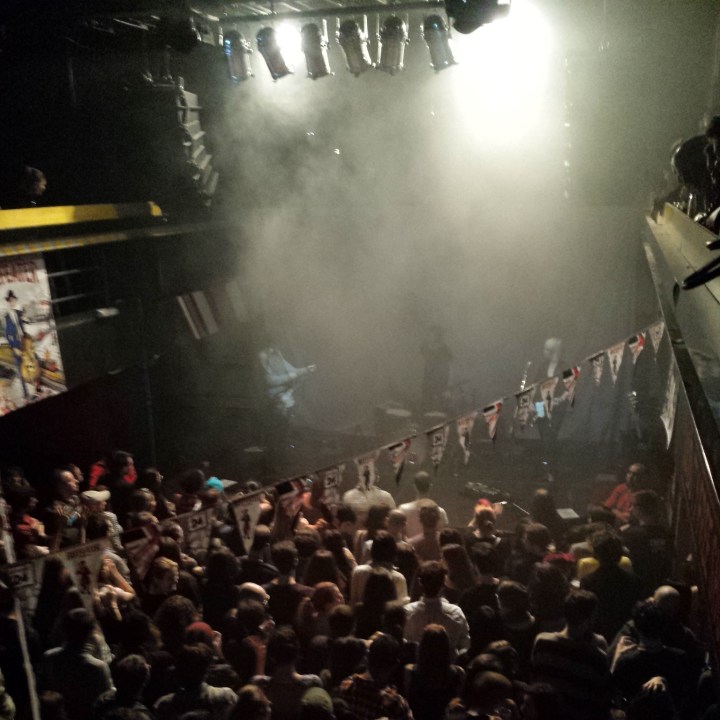
Even late though, the Raveonettes were rocking. Danish indie-synth-pop is incredibly dreamy, and I was happily caught up in it under the smoky lighting. Terminal One was exactly the kind of club I’d been looking for too, an industrial warehouse space with a very well decorated stage that I can best describe as a cross between Oxford Art Factory in Sydney and Trezor in Berlin.
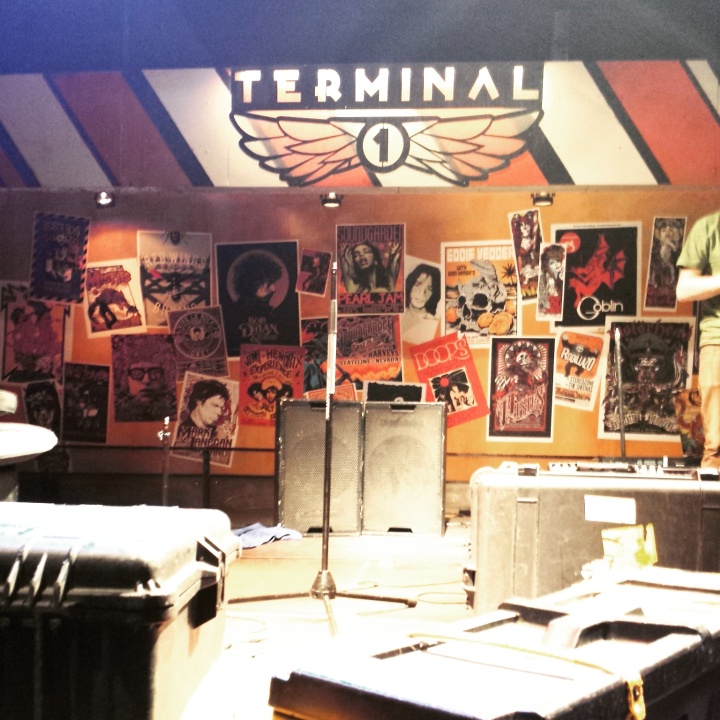
The music after the Raveonettes were done also kept to the lines of indie-pop and indie-rock, and Tom and I had a good little boogie for a while – until I eventually got tired (Tom had far more endurance) and we moseyed on home.
My last day in Sofia was taken up just preparing for Thailand. The downside of doing long trips through different climates and continents is that you keep having to buy new things (you can’t pack for all weather conditions), get rid of things, and sort out visas, vaccinations and other bits of paperwork.
Poor Tom got dragged along as I ran around looking for sunscreen (which, in Bulgaria is crazily expensive – think the equivalent of 30AUD for the tiny travel sized bottles) after already having to put up with me spending about an hour in an outdoors store trying to pick up a new, smaller rucksack, and looking up where I could store my winter things in Bangkok.
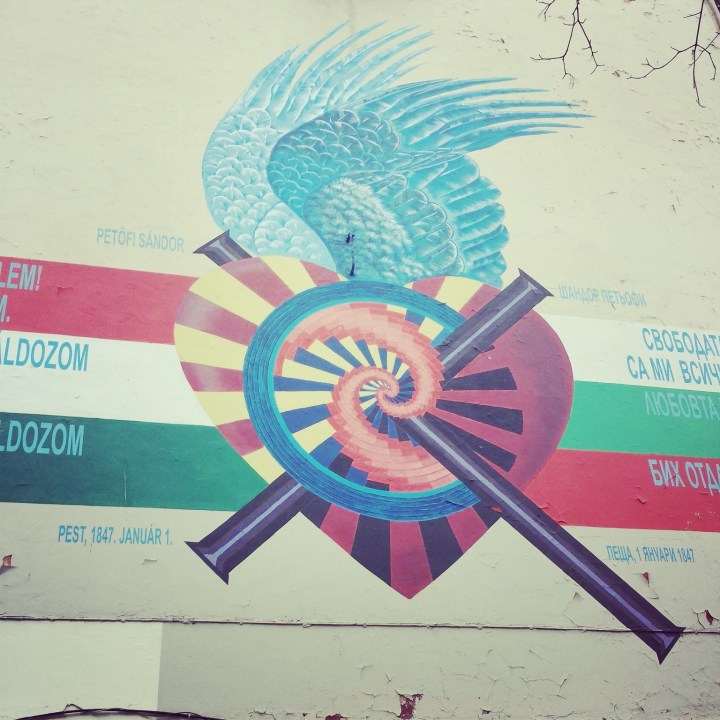
Then before I knew it, it was time to go. It had crept up on me and I hadn’t really thought about it. It was a little sad; I have some really good friends in Europe and the UK, people who I quite adore and miss, and for as long as I’d been on the same continent I knew I could see them again – and now I was leaving, and who knew when I’d be back, or if we’d all be different people the next time we met?
But these are melancholy thoughts, and I don’t like to dwell on them. Instead, I’d like to finish with this: if any of my friends from Europe and the UK are reading this, please know that I’ll miss you sorely and can’t wait to see you again – and please come visit me in Australia!

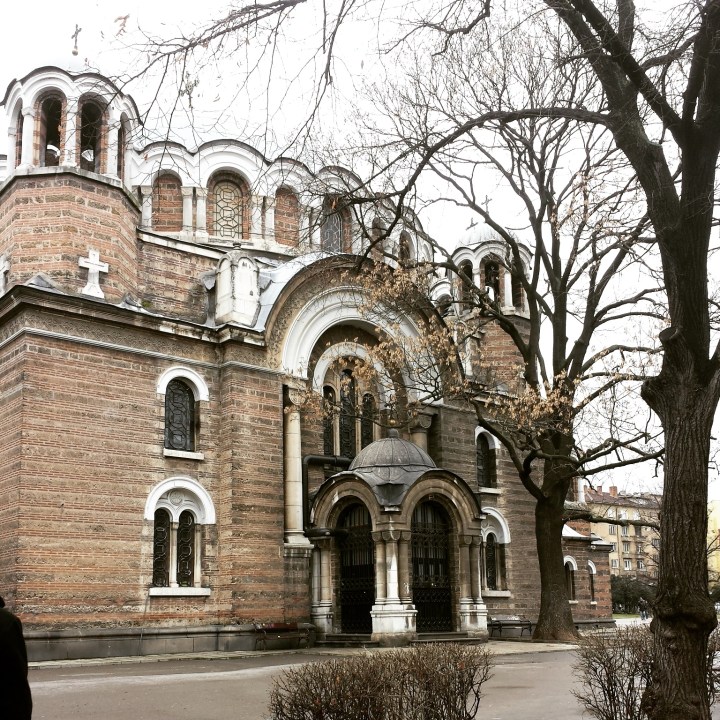
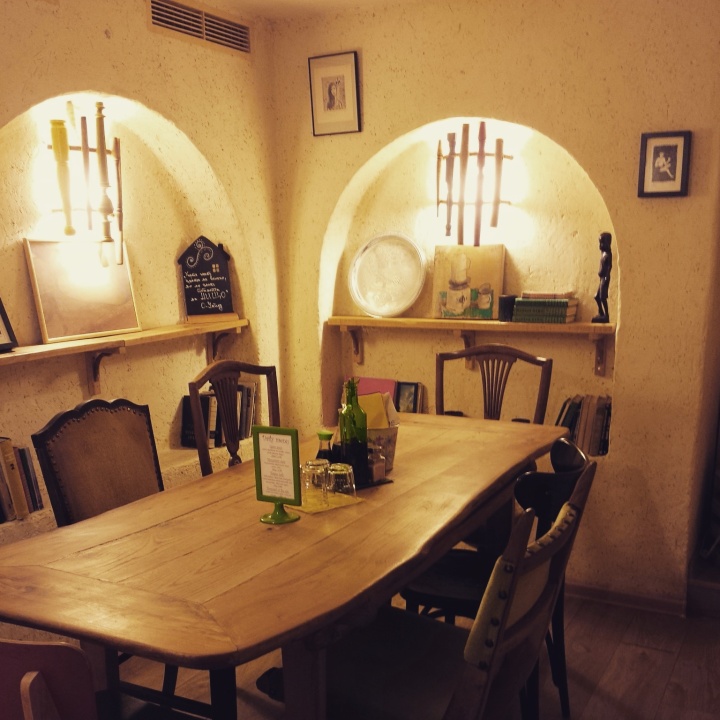
Marvelous photos.
LikeLike
Thank you! :)
LikeLike
Thank you!
LikeLike